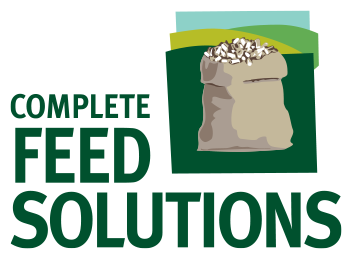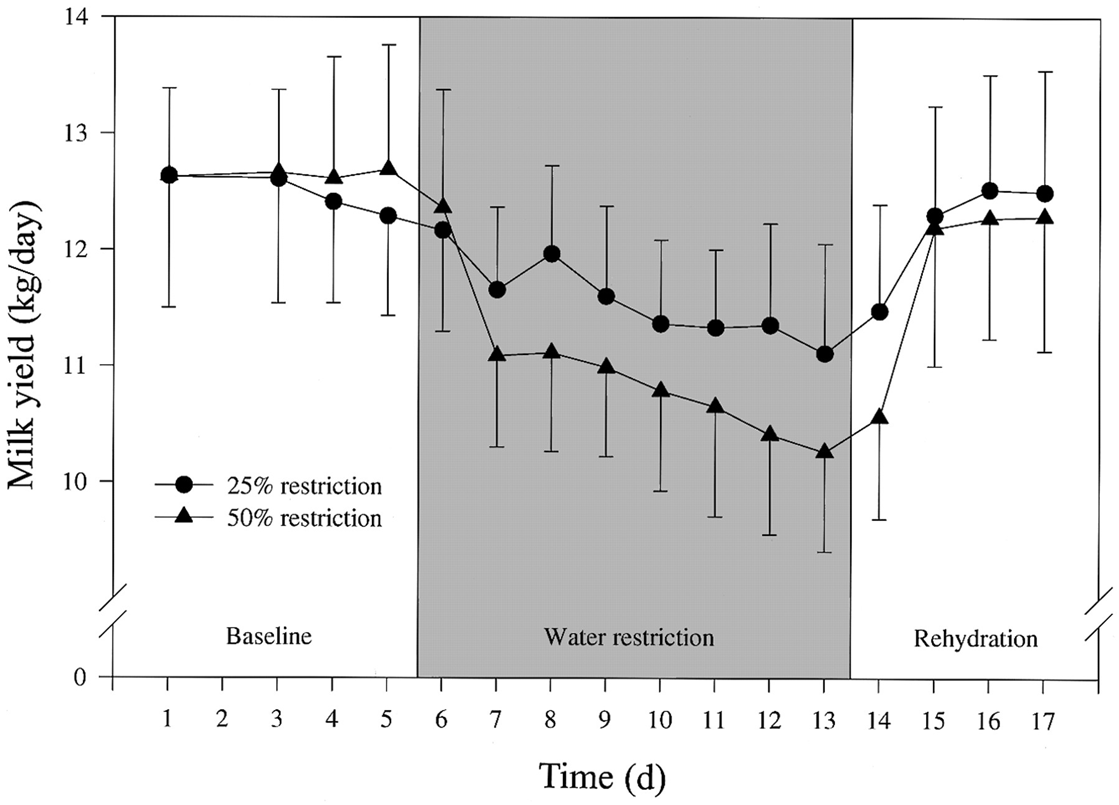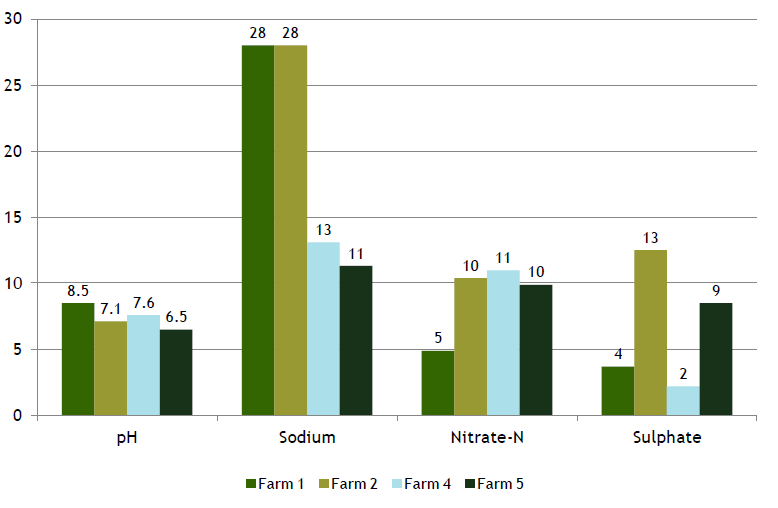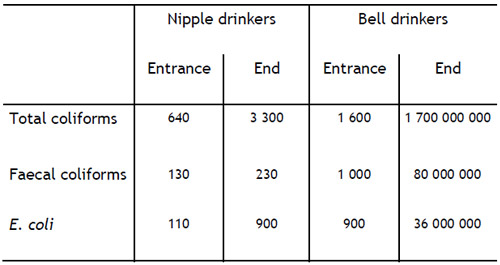My recent travels and discussion with a layer producer from one of the Pacific Islands has recently highlighted the importance of drinking water quality for our livestock.
The quality and quantity of water available to an animal, regardless of species, is extremely important for both health and productivity, with total daily water intake often much greater than one would expect. However, this is often taken for granted or overlooked when assessing factors affecting performance.
An essential nutrient
Water is essential for many body functions, including the movement of feed through the digestive tract, as a solvent in which many nutrients (amino acids, glucose, minerals and vitamins), gases (carbon dioxide and oxygen) and hormones are transported about the body and in which waste products are excreted. Many chemical reactions which occur in the body and which are facilitated by enzymes also take place in solution and involve hydrolysis.
Although we tend to assume that water intake is more important in the hot summer months, water also plays an important role in insulation during the cold winter months – the high heat capacity of body water acts as insulation thus helping to conserve body heat. At the same time, the water content of the body acts as a buffering agent to help regulate the pH of body fluids.
The animal obtains water from three sources, the water they drink (also known as free water), the water contained in the food they eat and the water formed during metabolism of organic nutrients. Factors affecting water intake include
- Animal factors
(genetics, age, sex, growth rate or production and physiological state) - Environmental conditions
(ambient and water temperature, sun or shade and rainfall) - Diet
(diet ingredients, dry matter and nutrient content) - Availability
(drinking time, drinking space, flow rates) - Water quality
(pH, mineral content, presence of chemical contaminants and bacterial contamination)
The high moisture content of our pasture is one of the reasons why the free water intake of New Zealand dairy cows is relatively low compared to that of cows on TMR type rations. Recent research carried out in New Zealand (Morris et al., 2010) indicated that the average daily water intake of a cow on pasture in mid lactation was 60l.
Water intake in layers and broilers is typically in the region of 1.8 to 2.0 times the feed intake. Consequently, a daily intake of 200ml would be typical for a laying hen, while the daily intake of broiler birds increases with age, as daily feed intake increases.
In most domestic animal species, the pattern of water consumption is closely associated with feed intake and consequently any factor which results in a decrease in water intake results in a drop in feed intake and subsequently production (Figure 1).
Figure 1: Milk production of dairy cows during baseline, 25% and 50% drinking water restriction relative to baseline intake), and rehydration (from Burgos et al., 2001).
Ensure adequate space
The ability of an animal to consume sufficient water is affected by a combination of the number of times the animal accesses the watering point and the amount consumed at each visit. Ensuring adequate space at the drinker or trough is essential if adequate water intakes are to be achieved. Similarly, the design of the water delivery system is key and must ensure that water pressure and pipe diameter are sufficient to supply the quantities of water required in the appropriate time frame.
Too high or too low a pressure in poultry drinker lines can inhibit water intake or result in wet litter and must be actively managed.
In the case of dairy cows, research has shown that consumption rates can be in the region of 15 – 20l per minute and so consideration must be given to the pipe size and water pressure of the delivery system must be sufficient to rapidly supply large quantities of water.
Dairy cows consume a significant proportion of their daily water intake after milking and consequently water troughs should be located in an area readily accessible once the cows have left the milking parlour. Ideally water should always be readily available as cows tend to alternate feeding and drinking. However, New Zealand authors (Holmes et al., 2007) reported that, in studies carried out at Massey University and also in Australia, cows offered water twice daily at the dairy produced the same amount of milk as cows given continual access to water in the paddock. It is worth noting that one group of Australian researchers (Cowan et al, 1978) suggested that cows could adapt to the provision of water at milking time only if this was a continual practice and that recurring adjustments to deprivation may well have a long term effect on milk production. Similarly, the second group of Australian researchers (King and Stockdale, 1981) observed that higher yielding cows than those in their trial (13l/day) may not be able to adjust to water restrictions as readily.
Would you drink it?
The cleanliness of water is an important factor which affects the intake of water and dairy cows in particular are sensitive to poor water quality. Simply cleaning out water troughs once a week or flushing drinker lines between runs in the case of broilers can have a significant effect on water intake and quality. A good question to ask yourself is whether you would drink the water you are asking your animals to.
Bacterial contamination
High bacteria levels (>100/ml) indicate contamination of the water source and efforts should be made to rectify this. The presence of faecal coliform results of greater than 0/100ml are a significant concern and should be investigated and addressed as a priority.
Even low bacterial counts are a concern as some bacteria can proliferate in water and consequently livestock could be exposed to high levels of bacterial contamination.
Although cattle tend to have a greater tolerance to high bacteria counts, excessive bacteria levels can interfere with rumen metabolism by competing with the normal flora essential for forage digestion, leading to reduced feed intake, while severe bacterial or microbial contamination can result in infections such as diarrhoea, abscesses, ulcers, mastitis and Salmonella.
The Ontario Ministry of Agriculture, Food and Rural Affairs reported that total coliform counts over 1/100 ml can cause scours in calves, while counts over 15 – 20/100 ml can result in diarrhoea and depressed feed intake in adult cows.
For optimum performance of poultry a maximum level of 0 faecal coliform bacteria per ml and a maximum of 50 coliform per 100/ml is recommended.
Implementing a regular water sanitation and line cleaning program for poultry sheds is essential if the build up of microbial contamination is to be minimized. Work reported in 1997 by Macari and Amaral clearly illustrates how bacteria can proliferate in drinker lines in poultry sheds and demonstrates the importance of ensuring effective water disinfection through the whole length of the drinker line (Table 1).
pH
Water with a pH of less than 6 leads to low water intake in poultry. Conversely high pH reduces the effectiveness of chlorination. In such cases treatments with commercially available organic acid preparations should be considered to help reduce water pH and improve performance.
The results of a trial using Kemira’s organic acid water treatment product at a rate of 0.5ml/l for broilers from 0 – 35 days of age were presented at APSS 2012. These researchers reported a significant improvement in both weight gain and FCR over the period for the treated birds.
It has been suggested that drinking water pH can have a more direct physiological effect on ruminant animals. A pH of under 5.5 may increase problems related to chronic or mild acidiosis, while a high pH (over 8.5) may result in problems related to chronic or mild alkalosis. High levels of minerals in water (i.e. sodium, potassium, chloride and sulphur) can also upset the normal electrolyte balance of the animal and this is of particular concern for transition cows which may be susceptible to milk fever. Local data from New Zealand farms shows just how variable water can be (Figure 2).
The presence of nitrate and nitrites in drinking water adversely affect animal performance. Nitrite levels above 10 mg/l for dairy cows and 4 mg/l for poultry adversely affect reproductive performance and growth rate respectively.
Figure2: Variation in water quality on New Zealand farms.
Table 1: Effect of drinker type on water bacterial contamination (from Macari and Amaral, 1997).
Often overlooked
Water is an essential nutrient for all animal species, but we often take the complex issues associated with quality and quantity for granted. Take the time to get your water tested – there may be more value in it than you think. Please contact us if you have any questions – we are here to help.
“Recent research carried out in New Zealand indicated that the average daily water intake of a cow on pasture in mid lactation was 60l.”



